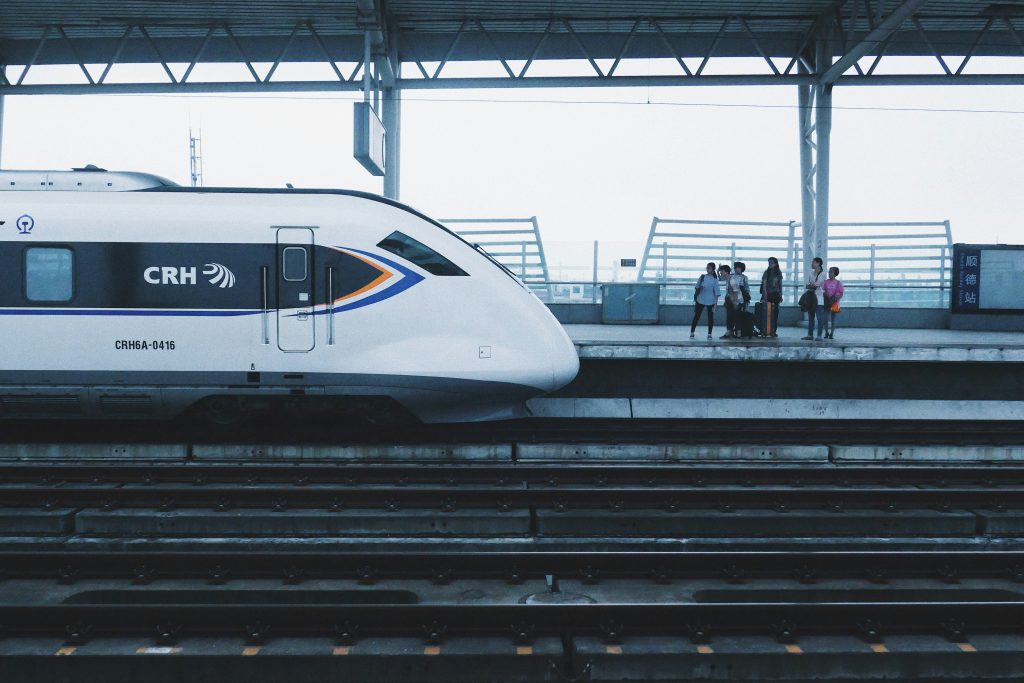China is such a large country. Every year hundred millions of Chinese people move from the cities they work in to their hometown. Only a giant transportation system can handle that. Taking good use of China transportation system can really save your time and money.
1. City-to-City: Trains Rule, Buses… Exist
High speed train is the most common method of China transportation. China’s bullet trains make flying feel outdated. Here’s how to game the system:
- High-Speed Rail (HSR):
- Buying Tickets: Use Trip.com (English-friendly) or the 12306.cn. Foreign passports work at station ticket machines—if you can decode the interface.
- Pro Tip: Book “G” trains (fastest) for daytime trips. Opt for “D” trains if you need cheaper tickets and have time to kill.
- Seat Classes: Second class (二等座) is fine. First class (一等座) gets you 2 extra inches of legroom—worth it for 4+ hour rides.
- Overnight Trains: Hard sleepers (硬卧) are 6-bunk compartments with questionable sheets. Bring earplugs and a lock for your backpack.
- Buses: Only for masochists or ultra-budget trips. I once took a 10-hour sleeper bus from Shanghai to Qingdao. It was a nightmare. I could barely sleep because of the uncomfortable and shaking bed.
2. Within Cities: The App War
Forget Google Maps. China runs on:
- Didi (Chinese Uber): Link your foreign credit card. Use the “English Service” option to avoid drivers calling you in Mandarin.
- Metro Systems: Beijing/Shanghai/Guangzhou subways have English signs. Download Amap for offline maps.
- Bike Shares: Use Alipay to scan the QR codes.
Watch For:
- Taxi scams at airports (“broken meter” = 3x price). Demand they use the meter or walk away.
- Rush hour subway crowds (7:30-9:30 AM and 5:00-7:00 PM on weekdays).
3. Reaching Remote Attractions
China’s best sights aren’t in cities. Here’s how to reach them without a tour:
- Public Buses:
- For places like the Great Wall’s Jiankou section, take bus 916快 from Beijing to Huairou, then a black cab (yes, they’re legal here).
- “Tourist buses” at stations often cost 2x but save haggling time.
- Private Drivers: Hire through your hostel (¥600-1000/day) or book on Trip.com. Cheaper if you split with other travelers.
4. The “Why You Might Want a Tour” Reality Check
Independent travel is cool until you’re stranded at a Yangshuo bus station at midnight. Tours solve:
- Language Barriers: Ever tried asking a Hunan villager which minibus goes to Fenghuang? Exactly.
- Ticketing Headaches: Some attractions (e.g., Forbidden City) limit daily visitors. Tours reserve slots.
- Hidden Gems: Local guides know unmarked trails at Tiger Leaping Gorge or which Zhangjiajie glass bridge has fewer cracks.
But Avoid:
- “Shopping tours” disguised as cultural experiences (you’ll visit a jade factory instead of the Terracotta Warriors).
- Large group tours that move at toddler speed.
China transportation Final Word:
China rewards the prepared and punishes the clueless. If you’ve got the grit to navigate Didi drivers who ignore GPS, buses that leave 20 minutes early—go solo. If not, a small-group tour lets you focus on the views, not the logistics.

